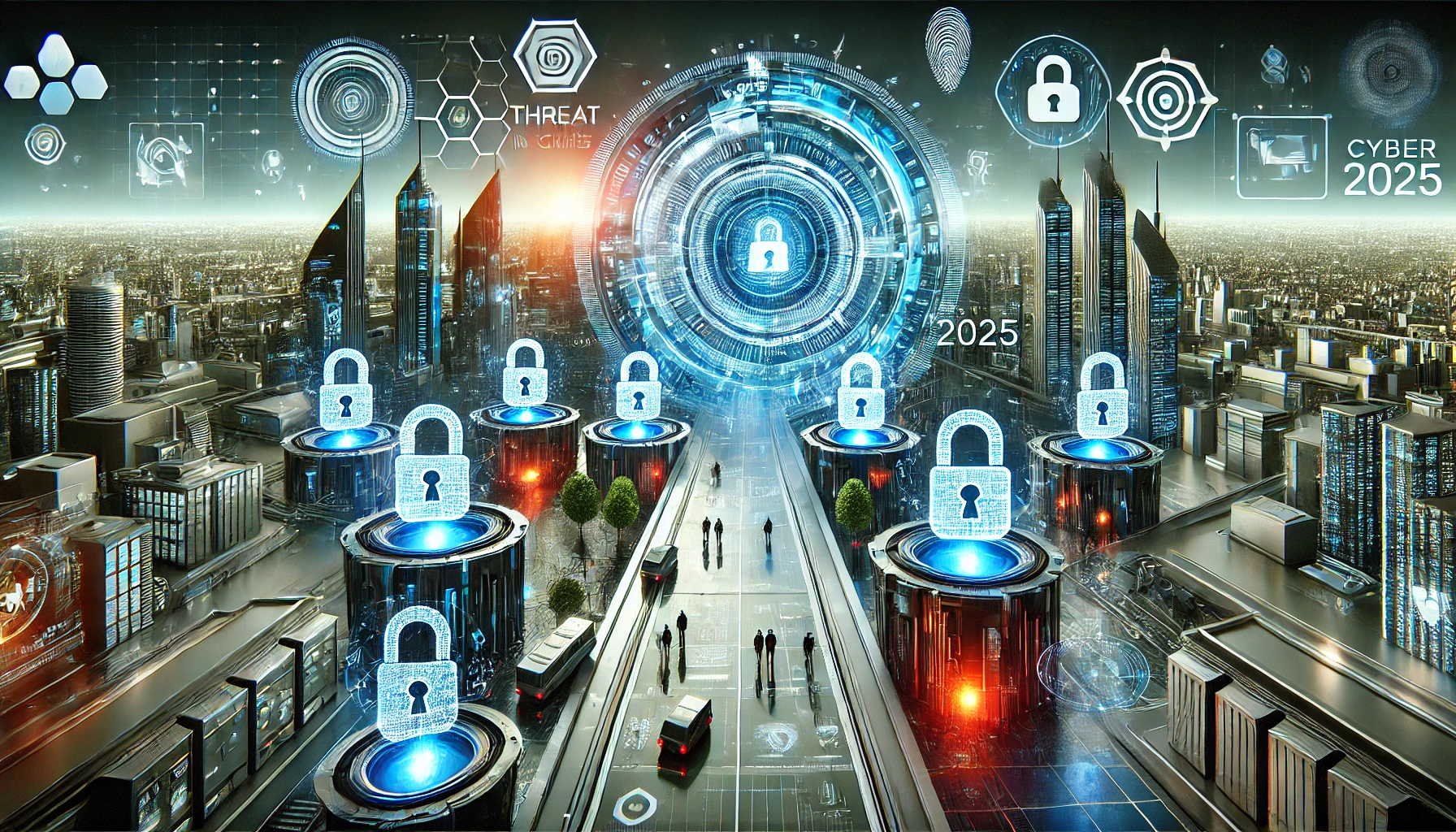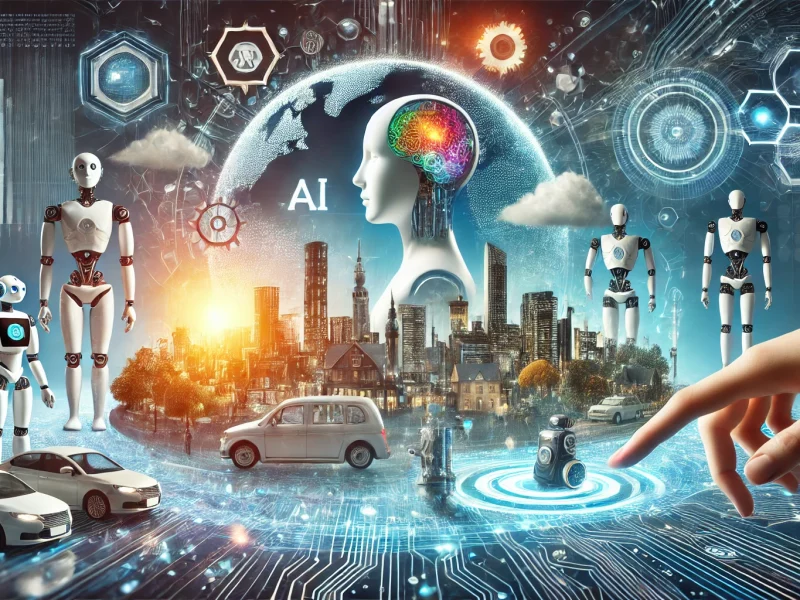As technology continues to evolve at a rapid pace, cybersecurity remains one of the most critical concerns for individuals, businesses, and governments. With the rise of artificial intelligence, 5G networks, and the Internet of Things (IoT), cybercriminals are developing more sophisticated attack methods. By 2025, cybersecurity threats will be more complex, requiring advanced strategies to protect sensitive data and systems.
In this article, we explore the emerging cybersecurity threats of 2025 and provide practical solutions to help individuals and organizations stay protected in an increasingly digital world.
1. The Changing Cybersecurity Landscape
Cybersecurity is no longer just about protecting computers from viruses. As digital transformation expands, cyber threats are becoming more advanced and widespread. Some key factors influencing cybersecurity in 2025 include:
- Artificial Intelligence (AI) in Cyber Attacks – Cybercriminals are using AI to develop intelligent malware and automate attacks.
- Growth of Remote Work – More employees working remotely means more security risks related to home networks and personal devices.
- 5G and IoT Expansion – More connected devices mean a larger attack surface for hackers.
- Quantum Computing Threats – Future quantum computers could break traditional encryption methods.
Understanding these factors is the first step toward preparing for emerging cybersecurity challenges.
2. Emerging Cybersecurity Threats in 2025
2.1. AI-Powered Cyber Attacks
AI is both a tool and a threat in cybersecurity. While organizations use AI for security, hackers are leveraging AI to create:
- Deepfake Attacks – AI-generated videos and voice recordings that impersonate real people, leading to identity fraud and misinformation.
- Automated Phishing Scams – AI-generated phishing emails that appear more authentic, making them harder to detect.
- Smart Malware – Malware that adapts to security defenses, making traditional antivirus programs less effective.
How to Stay Protected:
✅ Use AI-powered security tools to detect suspicious activity.
✅ Educate employees about deepfake threats and phishing detection.
✅ Enable multi-factor authentication (MFA) to add extra security layers.
2.2. Ransomware Evolution
Ransomware attacks have been rising for years, but by 2025, they will become even more aggressive and targeted. Hackers will focus on:
- Critical infrastructure (hospitals, energy grids, government systems).
- Cloud storage and SaaS platforms to lock out businesses from essential data.
- Supply chain attacks, disrupting entire industries by targeting third-party providers.
How to Stay Protected:
✅ Keep offline backups to recover data in case of an attack.
✅ Apply patches and updates regularly to prevent vulnerabilities.
✅ Train employees on ransomware prevention techniques.
2.3. IoT and 5G Vulnerabilities
With 5G networks expanding, more devices will be connected to the internet than ever before. While this brings convenience, it also creates more entry points for cybercriminals. IoT devices, such as smart home systems and industrial sensors, are often poorly secured, making them prime targets.
How to Stay Protected:
✅ Change default passwords on all IoT devices.
✅ Use a separate network for IoT gadgets to limit access to sensitive data.
✅ Ensure devices receive firmware updates to fix security flaws.
2.4. Quantum Computing and Encryption Risks
Quantum computers, which are expected to become more powerful by 2025, could break traditional encryption methods that secure sensitive data. Hackers may store encrypted data now, waiting until quantum technology can decrypt it later.
How to Stay Protected:
✅ Begin transitioning to quantum-safe encryption methods.
✅ Use hybrid encryption combining classical and quantum-resistant techniques.
✅ Stay informed about developments in quantum cybersecurity.
2.5. Social Engineering and Human Error
Despite technological advancements, human error remains one of the biggest cybersecurity risks. Social engineering attacks, where hackers manipulate people into revealing sensitive information, will continue to evolve.
Common social engineering tactics in 2025 include:
- Voice phishing (vishing) – AI-generated phone calls that sound real.
- Business Email Compromise (BEC) – Hackers impersonating executives to trick employees into transferring funds.
- Smishing – Phishing via SMS or messaging apps.
How to Stay Protected:
✅ Always verify requests before sending sensitive data or money.
✅ Train employees on how to recognize social engineering tactics.
✅ Implement zero-trust policies to ensure no user is automatically trusted.
3. Essential Cybersecurity Strategies for 2025
3.1. Zero Trust Architecture (ZTA)
Zero Trust means never assuming any user or device is trustworthy by default. Instead, security systems:
- Continuously verify identities before granting access.
- Limit access to only necessary systems (least privilege access).
- Monitor network activity for suspicious behavior.
Adopting a Zero Trust approach can prevent unauthorized access and data breaches.
3.2. Cybersecurity Awareness Training
Most cyber attacks target human vulnerabilities, making employee training essential. Businesses should:
- Conduct regular cybersecurity awareness workshops.
- Simulate phishing attacks to test employee readiness.
- Encourage a cybersecurity-first culture where employees report suspicious activity.
3.3. Strong Authentication Measures
Passwords alone are no longer enough. By 2025, organizations should use:
✅ Multi-Factor Authentication (MFA) – Combining passwords with biometrics or security tokens.
✅ Passwordless authentication – Using fingerprints, facial recognition, or secure apps.
✅ Behavioral biometrics – Detecting suspicious login attempts based on typing speed, device use, or location.
3.4. AI-Driven Cybersecurity Solutions
Just as AI is being used for cyber attacks, it is also a powerful defense tool. Companies should implement:
- AI-based threat detection – Identifying and blocking suspicious activity in real-time.
- Automated incident response – AI-powered systems that take action against threats before they cause damage.
- Predictive security analytics – Using AI to anticipate future cyber threats.
3.5. Secure Cloud Computing
With more businesses moving to the cloud, cloud security must be a top priority. Best practices include:
✅ Using end-to-end encryption for sensitive data.
✅ Enabling cloud access security brokers (CASBs) to monitor threats.
✅ Regularly auditing cloud storage permissions to prevent data leaks.
4. The Future of Cybersecurity: What Comes Next?
Looking beyond 2025, cybersecurity will continue to evolve. Some key trends include:
- Automated cybersecurity responses, where AI defends systems without human intervention.
- Decentralized identity solutions, reducing reliance on passwords.
- Cybersecurity regulations, with stricter laws to hold businesses accountable for breaches.
As cyber threats grow more sophisticated, staying informed and adopting proactive security measures will be essential.
Conclusion
Cybersecurity in 2025 will be more challenging than ever, with AI-powered attacks, quantum computing risks, and growing IoT vulnerabilities. However, by implementing strong security practices, individuals and organizations can stay protected.
From using AI-driven security tools to adopting a zero-trust approach, the key to cybersecurity is constant vigilance and adaptation. By preparing today, we can secure our digital future against the threats of tomorrow.


